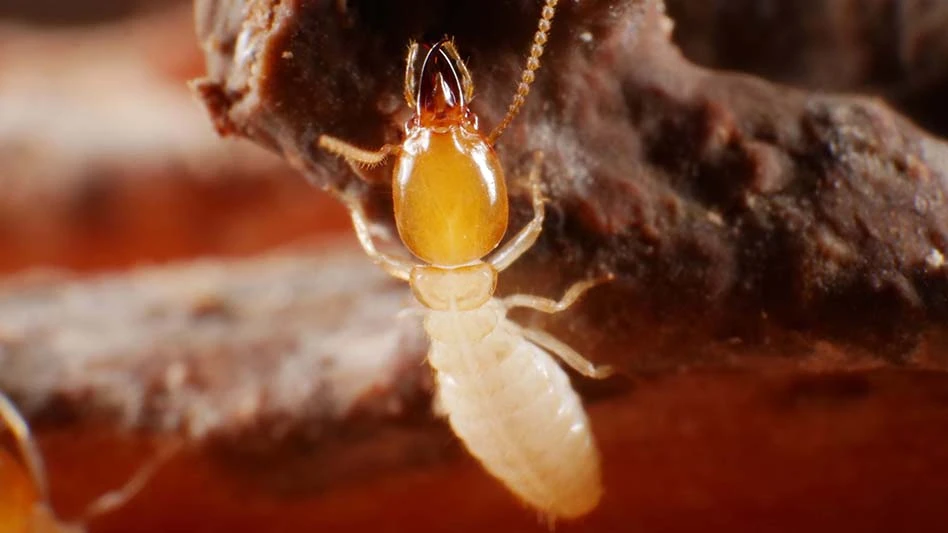
Credit: Thomas Chouvenc
The community of termite scientists have achieved a major milestone.
An international team of 46 researchers has unveiled a new, comprehensive classification system for termites, shedding light on this often-misunderstood group of insects.
All living species are classified through a process called taxonomy, which is the foundation of biology. Without it, science could not analyze the species, behaviors and social aspects that allow scientists to develop pest control strategies or appreciate their key roles in ecosystems.
“Termites represent more than 3,000 species, with most of them playing a critical role as ecosystem engineers, while only a handful of subterranean termite species are actually a big pest problem,” said Thomas Chouvenc, associate professor of urban entomology at the UF/IFAS Fort Lauderdale Research and Education Center and a collaborator on the team. “With this new classification, all three of the most important termite pest genera, or taxonomic groups covering more than one species, are now within their own families, differentiating them from all other ’subterranean termite’ species that are not pests.”
Just published in Nature Communications, the new family tree settles long-standing uncertainties in termite classification, providing a foundation that advances abilities to identify, study and control termite species.
“We have resolved the ambiguity of the previous system with a modular and very robust classification of the termite family,” said Simon Hellemans, a member of the Evolutionary Genomics Unit at Okinawa Institute of Science and Technology (OIST) and lead author of the publication. “With this new ‘dictionary,’ we have a solid platform from which we can study the diversification of termites and the roles they play in their ecosystems, as well as accommodate future discoveries.”
Termites have long been misunderstood. Only 3.5% of termite species are problematic for humans. The rest are essential for the environment. They help break down plant material, mix nutrients into the soil and make it easier for water to reach plants. Termites also build large mounds that stay cool, inspiring energy-saving cooling systems in modern architecture.
Rudolf Scheffrahn, a UF/IFAS professor of entomology and a taxonomist, contributed to the study by helping the researchers describe key morphological traits that would validate the molecular phylogeny, or the tree of life inferred from the DNA of species. He also provided key samples to this study to improve the resolution of this new termite family tree.
“Years of field expeditions yielded numerous termite species that contributed to the clarity of higher classification groups,” said Scheffrahn.
Traditionally, the classification of termites has been complicated by rapid diversification and morphological similarities, meaning those physical features or characteristics that look alike across different species. Together, as new species emerged, this led to a tangled family tree, characterized by confusion over evolutionary relationships.
The new system incorporates modern DNA testing and advanced analysis to the existing taxonomy. This new termite “tree of life” reveals a clearer picture of termite evolution. Every family and subfamily are now classified as monophyletic, meaning they share a common ancestor. This allows researchers to better understand evolutionary relationships and makes it easier to categorize new species, said Chouvenc.
The landmark work began at a symposium at OIST in 2022, where researchers proposed a new framework for the termite family tree. The team’s approach combined traditional morphological characters with cutting-edge data analyses powered by OIST’s supercomputer, Deigo. The result branched into a termite family tree that’s not only accurate but also flexible enough to incorporate new findings as they emerge. The team computed 51 models, each taking about two weeks to run. These extensive analyses, combined with expert hands-on knowledge, resulted in the most accurate and detailed classification of termites to date.
This symposium followed the UF International Termite Course organized by Chouvenc at the FLREC, where most of the symposium participants were present and initiated some of the discussion. Later, discussions and plans were expanded and solidified at the OIST meeting. Chouvenc was present to provide a UF/IFAS voice to the discussion.
“This is the result of decades of progress and collaborations, and it is quite remarkable to see such major milestones within our lifetime,” Chouvenc says.
The new classification highlights the diversity of termites and allows for greater precision in research and pest control, which has great implications for managing these insects more effectively.
“The new family of subterranean termite pest species Heterotermitidae, for example, is biologically more relevant than its previous classification, Rhinotermitidae, which includes many other termite species that are not pests,” said UF/IFAS Distinguished Professor of Entomology, Nan Yao Su. “Most species in Heterotermitidae are pests and share many aspects of their biology that make then susceptible to termite bait control protocols. This has great implication for future research."
“Not only do we now have the right species in the right box, but we also no longer have any confusion when we talk about subterranean termite pest species,” said Chouvenc.
Source: University of Florida/Institute of Food and Agricultural Sciences (UF/IFAS)
Latest from Pest Control Technology
- Donny Oswalt Shares What Makes Termites a 'Tricky' Pest
- Study Finds Fecal Tests Can Reveal Active Termite Infestations
- Peachtree Pest Control Partners with Local Nonprofits to Fight Food Insecurity
- Allergy Technologies, PHA Expand ATAHC Complete Program to Protect 8,500 Homes
- Housecall Pro Hosts '25 Winter Summit Featuring Mike Rowe
- Advanced Education
- Spotted Lanternflies, BMSBs Most Problematic Invasive Pests, Poll Finds
- Ecolab Acquires Guardian Pest Solutions





